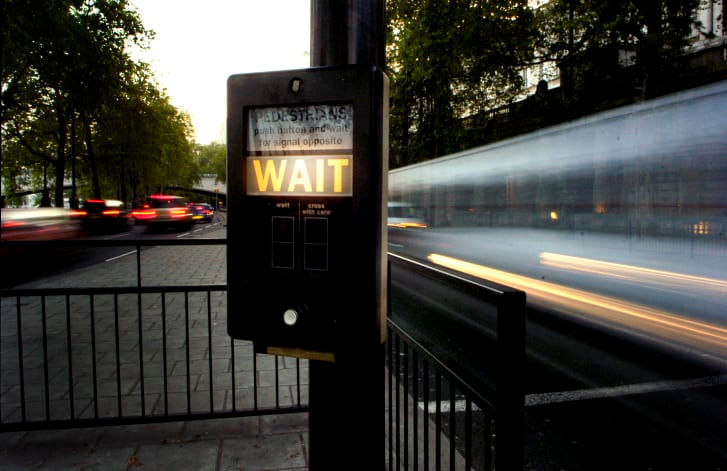Is Socialisation and Learning by Experience More Important Than Training and Conditioning?
- Victoria Elsmore
- Jun 10, 2024
- 3 min read
We have all been in a situation where technology of some kind does not work......but how does this relate to our dog's behaviour?
Most of us at some point in our lives or even on a daily basis will have turned up at a busy road kerbside and needed a bit of assistance crossing the road. We are highly motivated to cross the road because we need to reach a specific destination or achieve a certain goal. Nearby, there is a traffic-light controlled pedestrian crossing; we know how it works and we understand that in the past on a number of occasions when faced with the same challenge it has resulted in a positive outcome and we have been rewarded with crossing the road. So, we approach the crossing, press the button, but the "wait" light does not appear. In fact, nothing happens when we press the button. At this point a typical reaction would be a temporary increase in frustration, we press the button a few more times (we have been conditioned to offer a behaviour, so we keep on offering this behaviour). We can see the reward, we have been conditioned (trained) to press the button to gain access to our reward (crossing the road safeley) but our offered behaviour (pressing the button) has not worked on this occasion. What do we then fall back on? We want our reward in crossing the road, but what is it we must do to achieve this? We have to fall back on knowledge gained through socialisation and learning by experience.

As humans we have learnt that a busy road is aversive; from the loud noise to the fast moving intimidating vehicles. We also learn through social learning (different to socialisation) from our parents and those we spend our development years with that the road is a dangerous place. We therefore are able to do a risk assessment. We do not want to get run over, we know the road is a difficult place, we have witnessed others crossing the road in a certain way and they have achieved their reward in getting to the other side successfully.
This is a combination of socialisation (learning through experience) and social learning (learning from others). We have been exposed to the stressor or the trigger of the road, but in a productive and positive way with a calm individual to guide us and help us to make the right decision. As such we may have experienced a mild sense of anxiety, but this was quelled by the confidence of our teachers and the delivery of our reward. If we had been introduced and this had triggered an intense fear response, the outcomes of the actitivity would have been much different and may result in a phobia or intense memory of the event, which triggers the same fear response upon each and every exposure to the trigger. These responses are difficult to remove as our brains are predisposed to remember triggers that are judged to be deterimental to our ability to survive.
So, the conditioning has failed, but we do have socialisation and social learning to fall back on. We are able to remain calm around the road, we are able to wait for a lull in the traffic and we are able to remember our social learning and cross the road safely to achieve our reward of getting to the other side.
Dogs learn in the same way and it is for this reason socialisation and social learning are extremely important when we are considering the behavioural development of our dogs. Whilst dogs are believed not to have the mental capacity in their frontal lobe (due to its smaller size ratio to the rest of the brain) that humans have to achieve higher level thought processes such as rationality, guilt and analysis, which would leave them at a distinct disadvantage in the human based example above they are capeable of learning through multiple routes. This is why it is extemely important that dogs behavioural development is a balanced mix of learning through training and learning through experience.
We should expose our dogs to varying triggers and stressors that present in the environment in which the dog must learn to exist, but with an extremely gentle approach, avoiding a fear reaction and providing positive purposeful training to give your dog the best chance of making good decisions in the future.
PS Photograph of a cute dog at the end to make you smile!



Comments